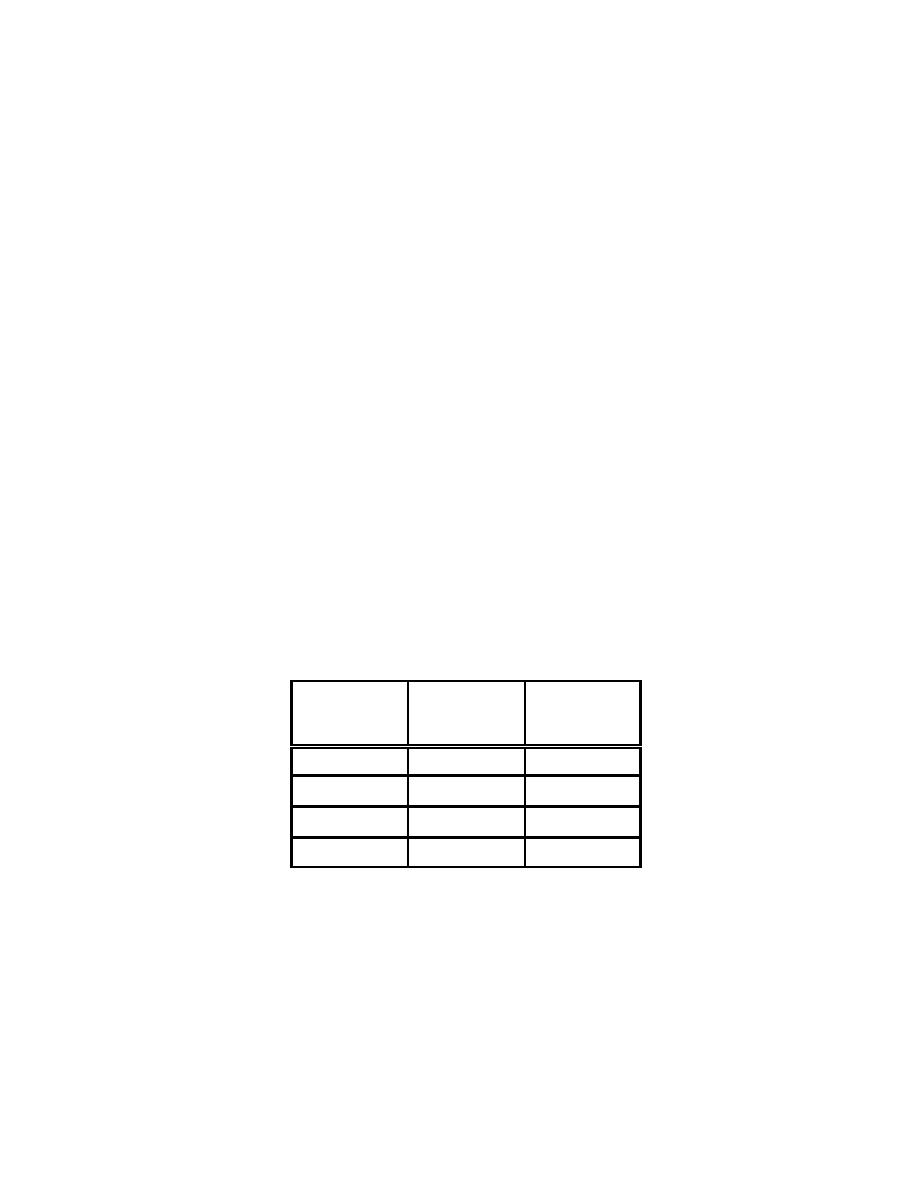 |
|||
|
|
|||
|
|
|||
| ||||||||||
|
|  DOE-HDBK-3010-94
4.0 Solids; Powders
Figure A.39 in Appendix A. The size distribution of the soil is shown in Figure A.40 and
tabulated in Table A.44. The soil was deagglomerated and pumped into the wind tunnel at
speeds of 1.4-, 4.6-, 6.8- and 8.9-m/s (3.1, 11, 15 and 20 mph). The results are plotted in
Figure 4-20, taken from the referenced source. The fraction airborne, ARF, is:
ARF = 0.0134 U + 0.00543
(4-2)
where U = windspeed, m/s.
The RF measured at various windspeeds, shown in Table 4-14, ranges from 0.44 at 1.4 m/s
to 0.90 at 8.9 m/s. The ARF at 8.9 m/s is 0.125 and, using the measured RF, 0.90, the
fraction of soil less than 10 m diameter is ~ 0.113. The fraction of the soil <10 m
diameter listed in Table A.43 is 0.00088. It would appear that a large mass of smaller
particles was shed by the larger soil particles or some fragmentation has occurred.
The equation would only apply to soil or powder with a similar size distribution and
characteristics. Process powders tend to be finer and more coherent and the observation here
may not be applicable. On the basis of the experimental measurements, a bounding ARF and
RF are assessed to be 0.0134 U + 0.00543 and 1.0 (limited by the total mass of material in
this size fraction in the source material) are recommended.
Table 4-14. Airborne Soil Particle Size Distribution
(Table 6 - Sutter, August 1980)
Wind Speed,
Aerodynamic
%10 m and
mph
Mass Median
less
Diameter, m
3.2
>10
44
10.4
6.7
63
15.2
9.8
50
20.0
5.3
90
4.4.3.3
Impact
Under some circumstances, powder at rest could be ejected into the air by the response of
the solid substrate on which the powder rests by the vibration/jolting induced by the impact
of falling debris or strong seismic vibrations. The effect could be minor for very solid
substrates such as structural members. The flexing of thin, metal sheets could be substantial
especially if the flexing is repetitive. Also the cohesiveness of the powder could inhibit
Page 4-83
|
|
Privacy Statement - Press Release - Copyright Information. - Contact Us |